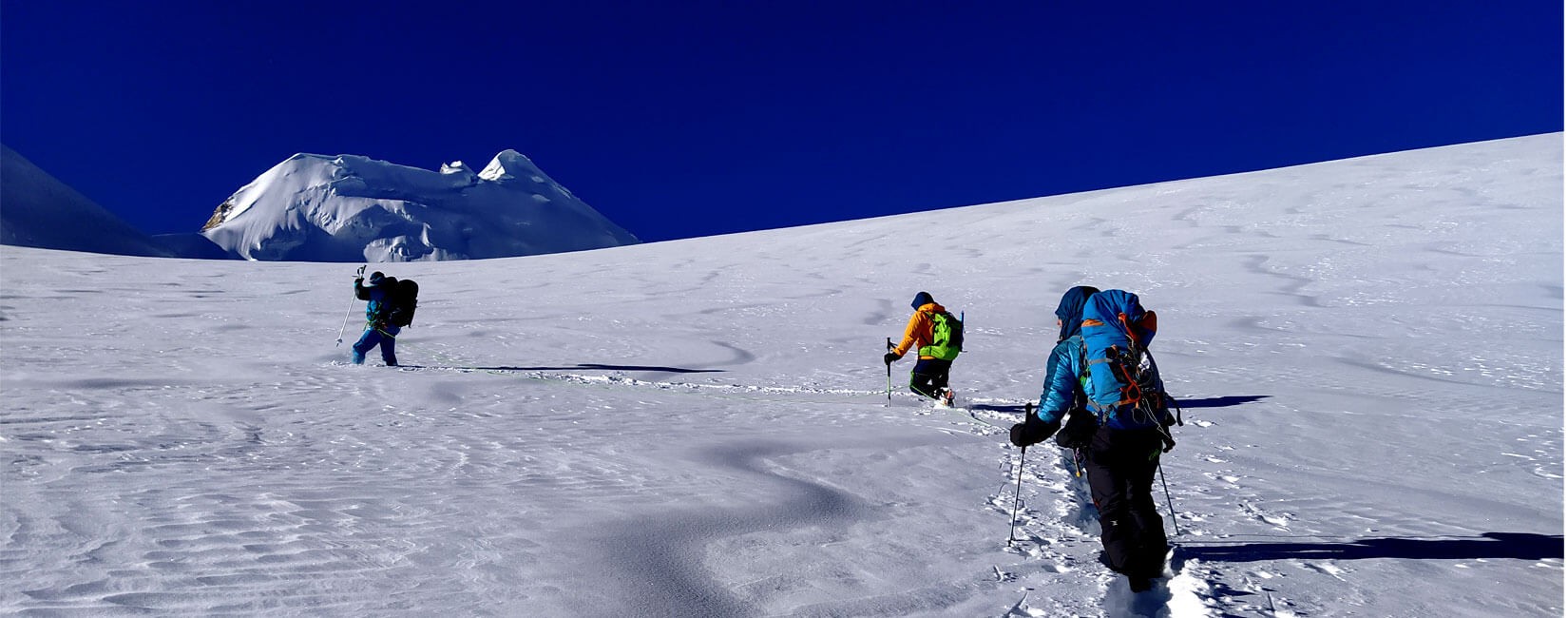call us on Viber/whatsapp
+977-9851133894It may arise a question in your mind, Dolpo or Dolpa? But it is very simple, that in Tibetan language Tolbo was permuted in to Dolpo and people inhabitants in Upper Dolpo region is called Dolpo Pa. Later on Dolpo is turned in to Dolpa. These days Dolpa and Dolpo both are popular. Especially Dolpo is popular among foreigners and Dolpa famous among Nepalese people.
Dolpo is the largest district of Nepal, and one of the tenth districts of Karnali province. Dunai is the district headquarters of Dolpo. Recently the federal system, Dolpo comprises two municipalities and 4 villages Development Committee.
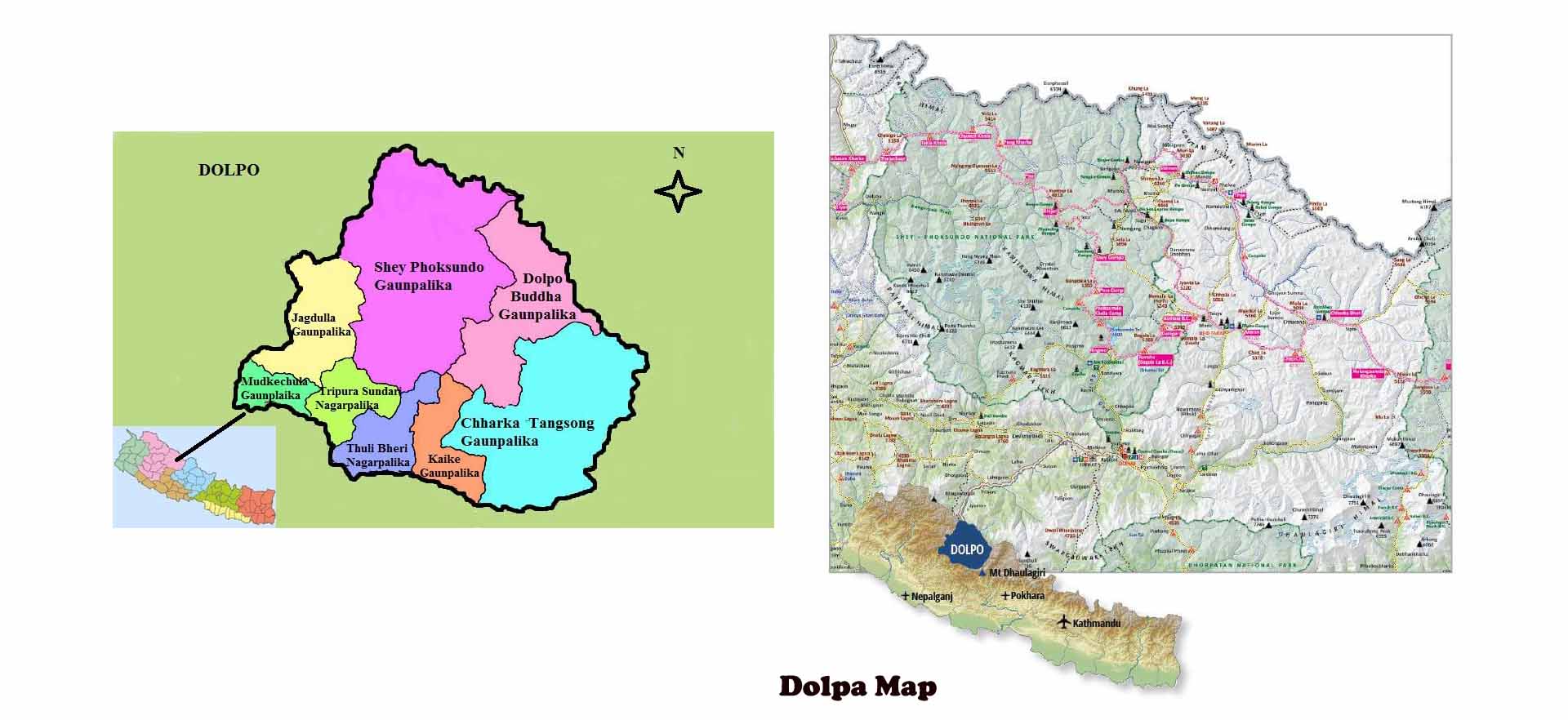
Dolpo covers an area of 7,889 km2 , which is the 5.36% of the total landmass of the country and the elevation ranges from Tribeni ( 1,525) to Churen Himal ( 7,625 m). The district is bordering with, Tibet ( China) on the north and northeast, Jumla and Mugu districts of Karnali on the west, Myagdi, Jajarkot and Rukum on the south, and Mustang to the east.
History of Dolpo
The historical record of Dolpo has appeared since 8th century. At the same time, Dolpo was ruled under the Kingdom of Zhangzhung.This kingdom was located in Western Tibet and was strongly connected with Bon religion. This kingdom is the first Tibetan Dynasty and they were known as the ‘Yarlung’ dynasty who ruled in between 6th to 8th century most of the Tibetan-speaking territories including ‘Dolpo'.
According to the historian, after 8th century, Yarlung Dynasty’s control over Dolpo was lost and Dolpo came on the dominion of Purang Kingdom. Later on again after 10th both Purang and Dolpo became a part of one of the most influential characteristic kingdom of western Tibet ‘Guge Kingdom.’ But it could be remained for a long as King sKyid lde Nyi ma mgon of Guge divided his kingdom among his three sons, (Mryul) Ladhak, Guge and Purang. The eldest son ruled Ladakh and established the Ladchen dynasty.Two younger sons ruled the region of western Guge(Spiti )and eastern Guge (Purang and Dolpo).
The kingdom of Guge prospered until around 1100 AD, then later on until 1253AD the region was taken under by the Ya-rste King A-SOG-lde. But soon the Dolpo and Serib were lost to the clan of Gunthang ruler, mGon Po Ide, and the both the region were united and classified among one of the three provinces of mNga’ris. In the 13th century, the great conquering hordes of Genghis Khan shattered kingdom of China, Tibet, and Mongolia. Meanwhile, Mongolian troops reached up to Dolpo and handed over the power and territory to the Sakya-Pa rulers. The Sakya Pa dominant was around hundred years.
In the 14th century, Dolpo became a part of Kingdom of Lo, and the control of western Tibet over Dolpo was eclipsed. As Dolpo became the territory of Lo Kingdom, people from Dolpo had to pay taxes and levies in the form of grains, labor, and religious service. However, for some time between 15th and 16th century, Dolpo was temporarily independent and was ruled by a king from Ranag dynasty. The Ranag king was from Nakhong valley in Upper Dolpo. According to some text, the Mustang and Ranag kings shared a close relationship. It is also depicted that, the Mustang king presented his eldest daughter in marriage to the Ranag king.
By 1789, the Gurkha armies had extended their territorial control over Kaligandaki valley trade route to the Lo Kingdom of Mustang and the Dolpo region. In 1950, Dolpo region was divided into four valleys, Nakhong, Panzang, Tarap and Chharka and the in 1975 three additional zones like Mukot, Bhijer and Phoksundo were added to make seven VDCs.
Climate
On the basis of elevation range, Dolpo is divided in two distinct levels like Lower Dolpo and Upper Dolpo. Lower Dolpo comprises altitude below 3000m, whereas Upper Dolpo is on above 3000m. Dolpo is lies in the rain shadows of Dhaulagiri, Churen Himal, Kajiruba Himal, and Tibetan plateau that is why annul precipitation is normally less than 500 milimeters. The southern slopes of Himalayan range temperatures 10C to 30C whilst the Northern Great Himalayan range from 15C to -10C.During the monsoon, temperatures rarely below freezing except in the highest meadows.
Culture and Religion
Sparsely populated Dolpo, is home of multi-cultural inhabitants and the followers of Hinduism and Shamanism, Bon and Tibetan Buddhism. Though the Dolpo is divide in two part ‘Lower Dolpo and Upper Dolpo’ we comprehend on three parts; Lower Belt, Middle Belt and Upper Belt based on culture and tradition.
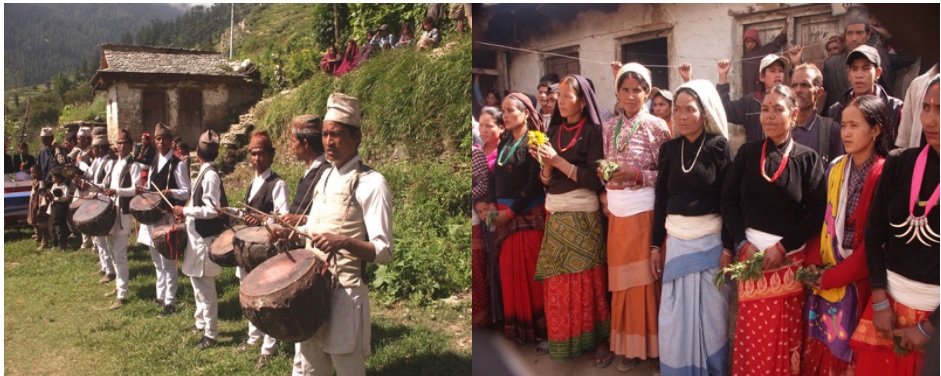
Lower Dolpo is majorly dominated by Khasan people purely Hinduism and Shamanism followers has their Khasan culture. The Khasan valley is then, garden of hindu cast such as, Brahmin, Kshetries, Thakuries, and others. They celebrate Hindu major festival like, Dashain, Deepawali, Janai Purnima, Maghe Sangkranti, and Shaman festival like Saune Puni, Bhadau Puni and Kartik Puni.
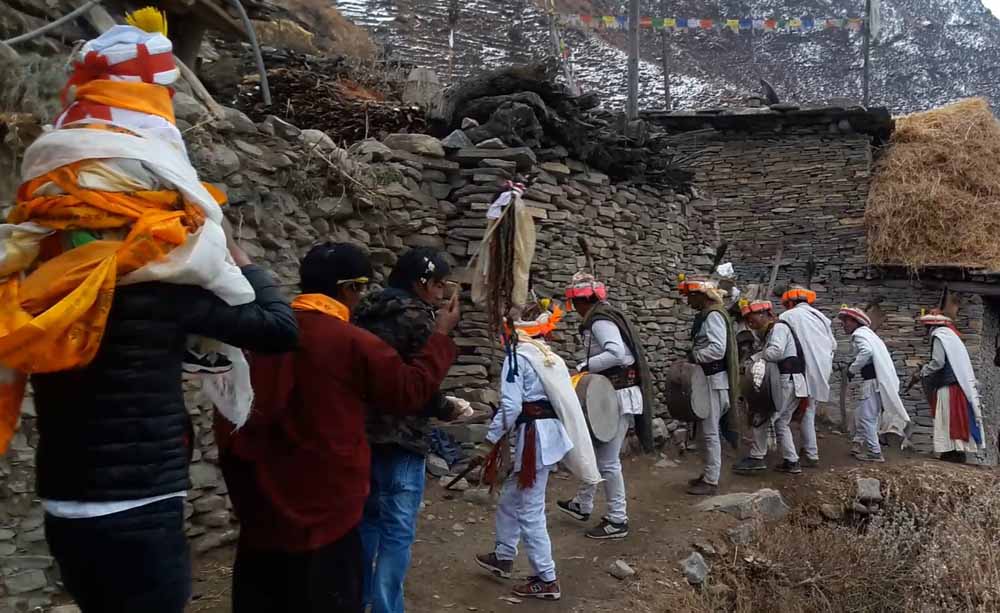
But on the middle range of Dolpo ‘Kaike Rural Municipality’ is the home of Magar ethnic people commonly known as ‘Tarali Magar’ or ‘Ticherongba’. They celebrate their own indigenous festival Rung, Chaitee, Keja, Yacha ect. By worshiping their ancestor god ‘Chyopata’ similarly they are also followers of Tibetan Buddhism and Bon.
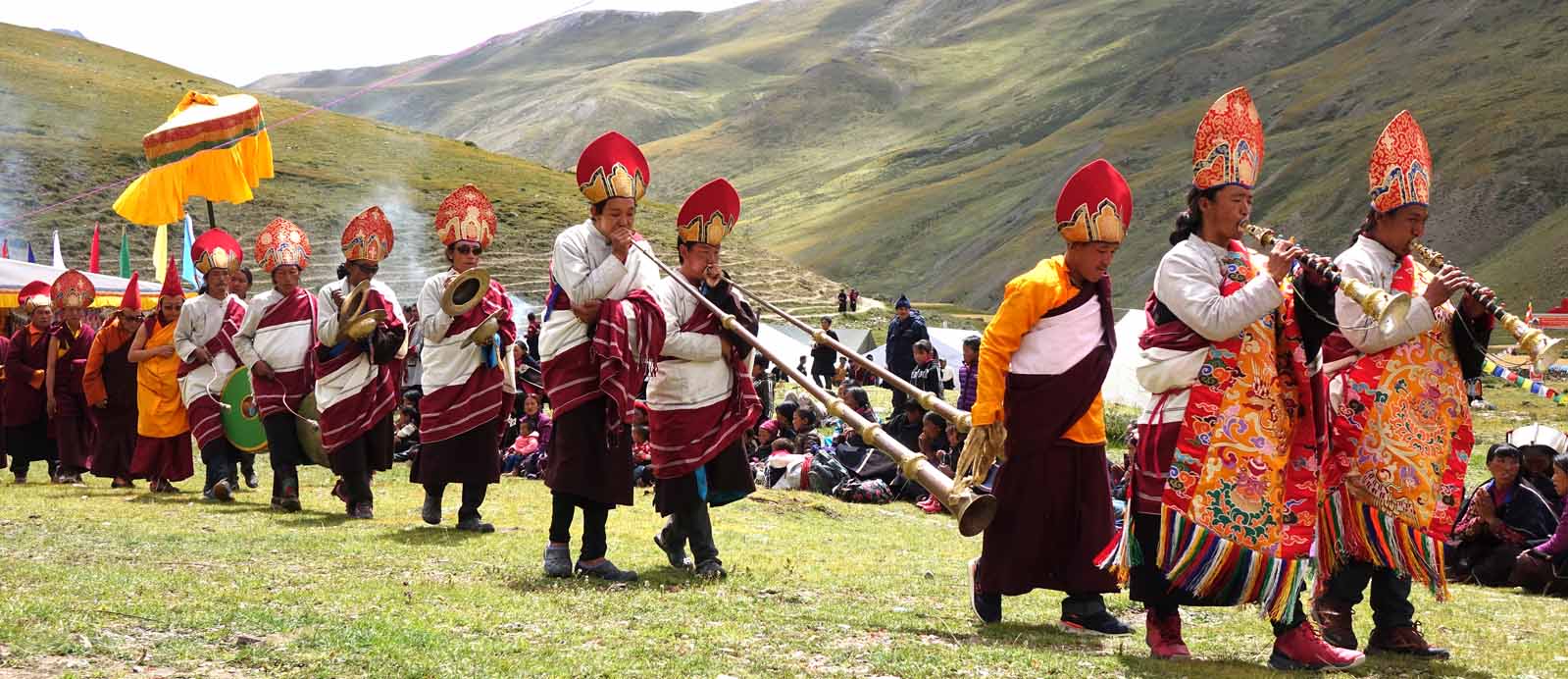
On the highland area of Dolpo, ‘Upper Dolpo’ comprises the numbers of Dolpo Pa people, who has their own culture and tradition since long history. As close to the Tibet border they have close cultural and religious tie up with Tibet. Inhabitants on this climatic zone are purely Bon and Tibetan Buddhism followers. The valley consisting numbers of Bon and Tibetan Buddhist Monasteries which are century old, and where some of holy Lamas had enlightened through solitary meditation and hermitage. They celebrate festivals like; Buddha Jayanti, Sonam Lhosar, Shey Festival, Ngungne, Chhechyu etc. Animal husbandry and agriculture supported along with the trans-human and trans-himalayan trade was mojer soruce of their livelihood.However, this tren is in changing due to the high valued fungus Cordeceps Sinensis ‘Yarsagumba’.
Getting in to Dolpo
One popular way of getting in Dolpo is through airflight from Nepalgunj to Juphal and other ways are either by walking or by helicopter charter. Untill the now Dolpo is not linked by motorable road with the other district.
Trekking season In Dolpo
Since much Dolpo rests in the rain shadow of Dhaulagiri, effects of the monsoon are not as extreme as experienced as other part of country. So, it is possible to trek in spring, summer, autumn. In the winter notoriously cold and with very heavy snowfalls blocks the high passes, so December to spring is avoided for trekking. Even though the best seasons for trekking is in autumn i.e September, October and November.
Trekking route in Dolpo
Trekking in Dolpo offers various Dolpo trekking itineraries; low land to high land, trekking within the Dolpo, and trekking to cross border districts. Lower Dolpo itineraies like, Lower Dolpo Circuit trek Lower Dolpo Featured Trek, Lower Dolpo Exploring trek are exploration and discovering Lower Dolpo region. Trekking itineraries, Dolpo Immersion Trek, Inner Dopo Trek and Dolpo Exploring trek are the trekking itineraries which takes around the Lower and Upper Dolpo. However, Upper Dolpo Upper Mustang Trek, Upper Dolpo Upper Mustang Trek, Dolpo Mugu Rara Trek, Lower Dolpo Rara Trek, Dolpo Jomsom Trek and Dolpo Beni Trek are cross border district itineraries. Dolpo is restricted region and trekking in Dolpo region needs the restricted area permit (Dolpo trekking permits).
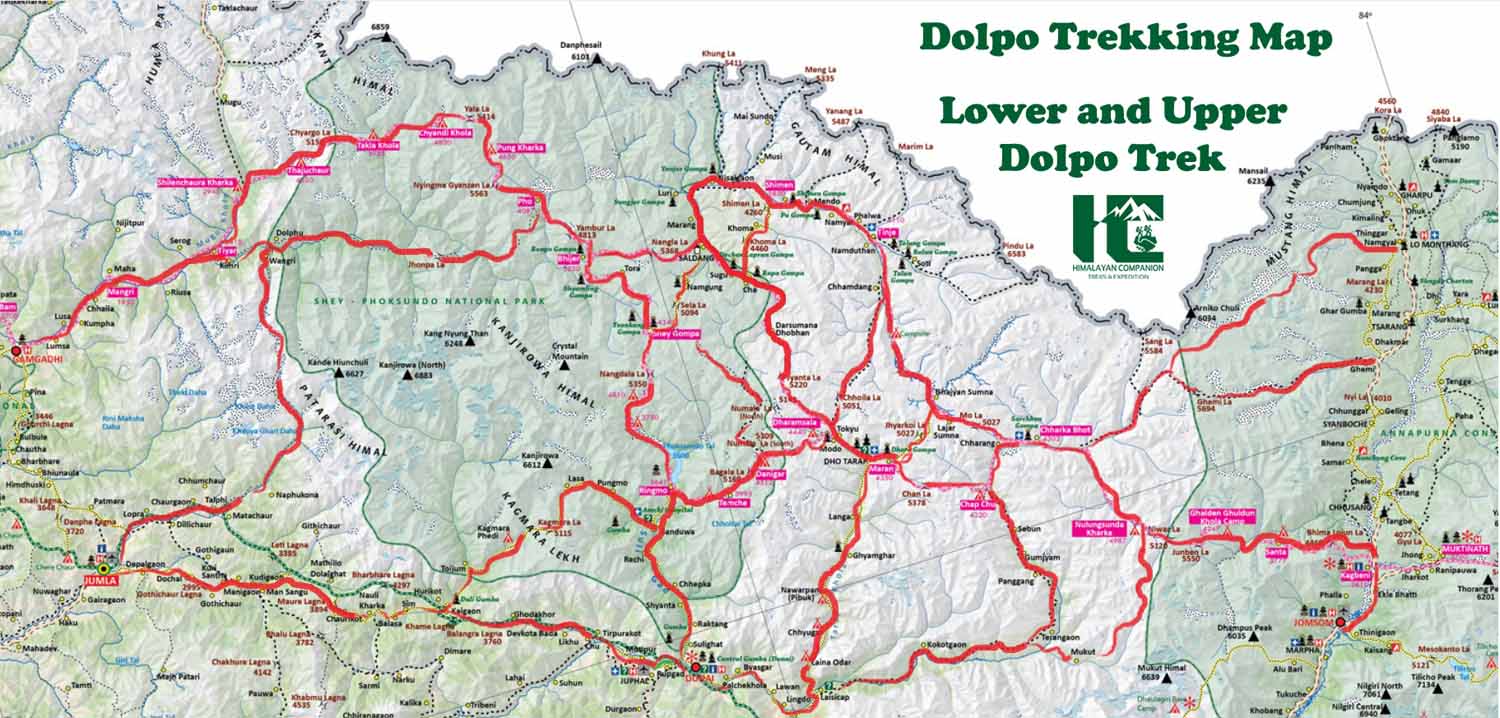
Dolpo Trek Permits
Doing Dolpo you need Dolpo Trek Permits. Dolpo trek permit are issued only through the registered trekking agency. That is why while doing the Dolpo treks in Nepal, you have to go through registered trekking agency.
How much Dolpo Trekking permit cost?
As already mention above that the Dolpo treks in Nepal need Dolpo trekking permits. You may also curious to know that how much it costs for Dolpo trekking permit.
Lower Dolpo trekking permit cost, US$ 20 per week (1st 7 days) and US$ 5 per day person.
For example if you are doing two weeks Lower Dolpo trek then it would cost US$20 for 1st 7 days and (7XUS$ 5) is US$35 rest days and total cost is US$55 for 14 days Lower Dolpo trek.
Upper Dolpo trekking permit cost, US$500 for 1st ten days and US$50 per day per person.
For example if you doing 12 days Upper Dolpo trek would cost US$500 for 1st ten day and (US$50X2days) is US$100 and total US$1100.
Climbing In Dolpo
Dolpo is famous for long, challenging and strenuous adventure trek. Only a few people can imagine that, there are also very interesting peaks and summits to climbing. Including a easiest climbing above 7000m peak and other several unclimbed and virgin summits are found in Dolpo. And Dolpo will offer you a great adventure experience of peak climbing.
If you are keen to climb above 6000m and below 7000m then Dolpo could offer a wonderful Peaks climbing opportunity. Araniko Chuli (6034m) in Mustang enables a fine transverse from Lo Manthang to Chharka. Mukot Himal (6087m) opens a new access route from Marpha and Hidden Valley. Norbung Kanga (6085m) and Kanta Gatan (5910m), are in between Dho Tarap and Phoksundo.
On the Northernmost frontiers of Dolpo, Mariyang (6528m), Swaska Kang (6405m) and Danphesail (6103m) are awaiting. For admirer of altitude, Putha Hiunchuli (7246m), is an easy peak of Nepal. Then to the east Churen Himal (7371m) and Dhaulagiri range are towering for experienced Mountaineers.
To the west of Dolpo mystical Kanjiruba Sanctury, the peaks of Kade Hiunchuli (6627m), Patrasi (6450m), Tso Karpo Kang (6556m) She-Shikhar (6139m) Kanjiruba North(6313m) and Kanjiruba Southa (6883m) are permited for climbers.
